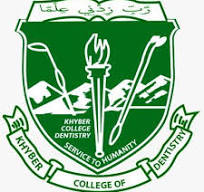THEFREQUENCY OFPEG-SHAPED MAXILLARY PERMANENT LATERALINCISORS AMONG ORTHODONTIC PATIENTSOF TWOHEAL THDISTRICTS OFPUNJAB, PAKISTAN
DOI:
https://doi.org/10.33279/jkcd.v8i01.376Keywords:
Maxillary lateral incisors; Peg Laterals; Frequency.Abstract
Objective: To determine the frequency of peg-shaped maxillary lateral incisors along orthodontic patients of two health districts of Punjab, Pakistan.
Materials And Methods: This cross-sectional study was conceived at Faisalabad Medical University and de’Montmorency College of Dentistry, Pakistan.Duration of study was from December 2016 to October 2017. Non-probability consecutive sampling technique was used. Three hundred untreated patients were included as per selection criteria. Patients with cleft lip and palate or having any craniofacial malformations were excluded. Method of clinical examination was used to find the presence of peg maxillary laterals by measuring its mesiodistal dimension with standardised digital vernier callipers, and panoramic radiographs were used to confirm the presence and size of maxillary lateral incisors.
Results: Six percent(N=18)subjects were found to be having peg-shaped maxillary lateral incisors out of 300 selected patients.Among the patients with peg laterals, unilateral-type was more common as compared to the bilateral one. Peg laterals were more common in females as compared to males.
Conclusion: Frequency of peg-shaped maxillary lateral incisors was found to be 6% among orthodontic patients of two health districts of Punjab, Pakistan.
Downloads
Published
How to Cite
Issue
Section
License
Copyright (c) 2018 Shabbir Hussain, Muhammad Azeem, Rabia Awan, Awais Ahmed, Sadia Afif, Usman Shakoor

This work is licensed under a Creative Commons Attribution-NonCommercial-NoDerivatives 4.0 International License.
You are free to:
- Share — copy and redistribute the material in any medium or format
- Adapt — remix, transform, and build upon the material
- The licensor cannot revoke these freedoms as long as you follow the license terms.
Under the following terms:
- Attribution — You must give appropriate credit , provide a link to the license, and indicate if changes were made . You may do so in any reasonable manner, but not in any way that suggests the licensor endorses you or your use.
- NonCommercial — You may not use the material for commercial purposes .
- No additional restrictions — You may not apply legal terms or technological measures that legally restrict others from doing anything the license permits.









